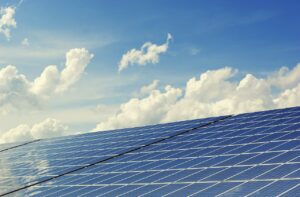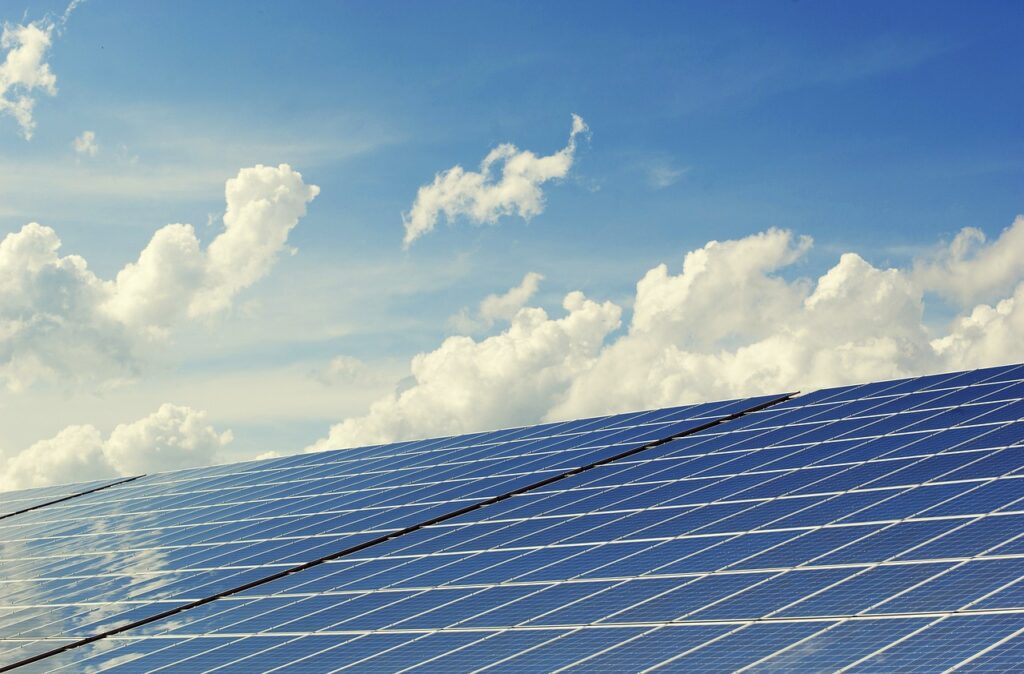Are solar panels really good for the environment? This is a smart question that arises in light of the spread of solar panels and reliance on them to generate electricity in various parts of the world to meet our various needs. Let’s take a look at how solar panels are made and discuss the pros and cons for the environment.

Are solar panels really good for the environment?
When you’re looking for an answer: are solar panels really good for the environment? Understand how panels are made and how they are installed. This enables us to reach a comprehensive answer about the negative and positive effects of solar panels. Should you really use solar panels?
What are solar panels made of?
In fact, there are two types of panels to generate electricity that differ from each other in terms of the source used to generate electricity: Photovoltaic (PV) uses sunlight, while CSP uses solar heat.
PV panels are mainly made of crystalline silicon (c-SI) while others are made of cadmium telluride, copper indium gallium selenide panels, and amorphous silicon thin films.
Panel manufacturing steps
Crystalline silicon solar panels are made using: 76% glass, 10% plastic polymer, 8% aluminum, 5% silicon, 1% copper, and about 0.1% silver and metals. In addition to carbon, but what is the true carbon footprint of solar panels? Actually it comes either from coal, or from trees. Then the manufacturing process takes place by following these steps:
Silicon dioxide is converted to “metallic grade silicon” using a sufficient amount of energy in a furnace.
Then add one part silicon dioxide and two parts carbon.
Raise the temperature to 2200°C.
Remaining 99% pure silicon and carbon monoxide, to produce 100% pure silicon the silicon must be upgraded to polysilicon metal using hydrochloric acid and hydrogen gas.
After adding the acid and gas, the polysilicon metal remains melted again in a cylindrical mold with a length of 5 meters. Then boron is added to charge the metal with a positive charge on one side. When the melted silicon cools down, a single crystal structure is formed in the form of a cylindrical ingot.
The pure polysilicon metal blocks are then cut using a wire saw into strips called wafers.
Are solar panels 100% sustainable? How long do solar panels last? Can solar panels be recycled?
In fact, energy panels are not 100% sustainable, but they can last between 25 and 30 years, depending on their quality.
Solar panels can be recycled
As Ashrama Crystalline Silicon Solar Panels consist of aluminum, glass, copper wire, polymer layers, back plate, silicon solar cells and plastic junction box. The polymer layers seal the board from weather exposure but on the other hand make recycling and disassembly of the board difficult. Where the removal of the adhesive requires high temperatures.
But you can recycle glass, aluminum frame, copper wire and plastic junction bo
Whereas silver, internal copper or toxic metals such as lead and cadmium are difficult to recycle.
Solar panel health side effects
Users of solar energy systems of all sizes are concerned about the possibility of fire, electricity or dangerous electromagnetic radiation. Let’s discuss them below:
Fire hazards
Lightning is attracted to PV panels but the PV panel structure is subject to lightning discharge as a structure without a PV system. The small photovoltaic systems comply with the requirements of the Polish Fire Protection Ordinance and currently offer non-flammable screens to enhance user safety.
Electrocution risk
Exposure to electric shock is one of the most important effects of the panels on health, given that the working system voltage may range between 600 and 800 volts, but there is protection against the risk of electric shock represented by sufficient overloading of the system, short circuit, and lightning protection.
The magnetic field
The electromagnetic radiation emitted by photovoltaic cells and modules disturbs people, but does not affect the individual’s well-being. Non-ionizing radiation levels meet the standards of the Ministry of Environment’s regulation of acceptable electromagnetic field levels and are safe for human DNA and organ health.
But is there a negative impact of the panels on the environment? What are the negative effects of solar energy on the environment?
Negative effects of solar panels on the environment
The disadvantages of solar energy are evident in its effects on environmental resources, including land, water and plants. are solar panels really good for the environment
Are solar panels more environmentally friendly? Let’s discuss that below:
habitat loss
Large solar systems require large areas for installation, which negatively affects the vegetation cover. Also, construction activities when installing large systems result in air and noise pollution, which affects flora and fauna. In addition, the diversion of water into solar panel manufacturing and cooling systems has a negative impact on wildlife. The toxic chemicals used in manufacturing the panels may also cause deterioration of water and land resources, thus negatively affecting the wildlife in the area.
Land use modification
Large-scale solar systems require dedicated areas of land that are reflected in agricultural fields, residential areas, forest areas, or recreational areas.
Stress on water resources
Water is used in the manufacturing and maintenance of panels and in the cooling system of CSP plants. However, thanks to technological development, their use in the manufacturing process has been reduced, by introducing robotic cleaning devices to control water consumption or manage it without water.
Exposure to hazardous materials
Several hazardous chemicals are used to purify semiconductors in the manufacturing process, including: sulfuric acid, hydrochloric acid, nitric acid, methyl chloroform, hydrogen fluoride, and acetone.
Modern thin-film cells are also more dangerous than silicon cells because they contain toxic substances including: copper indium gallium diselenide, gallium arsenide, and cadmium telluride.
How much pollution do solar panels create?
The installation of large solar farms requires clearing and classifying large areas of land, thus causing soil pressure and erosion and changing drainage channels. Incorrect disposal of toxic chemicals can also reduce costs and save time, and increase the risk of land, water and air pollution.
Environmental impact of solar panel manufacturing
The manufacture of solar panels requires large amounts of resources, including: water, industrial materials, and fossil fuels.
As coal is an essential component of the manufacturing process, this may result in an increase in carbon emissions. It also uses hydrofluoric acid and sodium hydroxides, which are strictly required for the disposal and treatment of toxic wastewater.
Studies also indicated that silicon particles that result from the panel production process may cause silicosis upon contact with them.
Solar panel waste problem
Solar panels are made with cadmium and lead that may cause cancer, so there are no safety concerns regarding impurities. To recycle these components, additional costs must be allocated to remove impurities.
Due to the difficulty of recycling solar panels, they are disposed of in landfills, which reflects negatively on the environment due to the toxic chemicals in them. Cadmium may be released, then washed away by rainwater, then seeped into the soil, thus contaminating the surrounding area.
Environmental hazards of mining
Modern technologies require the use of rare metals during the manufacturing process, but these resources are limited and the demand for them is very high. It has also been proven that mining requires sinkholes, loss of biodiversity, and pollution of waterways that are located near acidic waste metals.
In conclusion, the answer is: are solar panels really good for the environment?
The technology of solar panels is a double-edged sword, as it is environmentally friendly and does not have dangerous effects on the environment and the individual, but the matter is not without some effects, so caution must be exercised.

